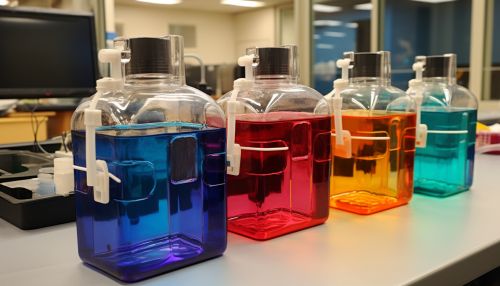Primary cell culture
Introduction
Primary cell culture refers to the process of growing cells directly taken from a living organism in an artificial environment, typically a petri dish or flask. This technique is widely used in molecular biology, biochemistry, and cell biology for studying the physiology and biochemistry of cells (cytology), their interactions, and the effects of drugs and toxic compounds on cells.
History
The concept of primary cell culture was first introduced in the early 20th century. The pioneering work of Alexis Carrel, a French surgeon and biologist, and his colleagues at the Rockefeller Institute for Medical Research, paved the way for the development of modern cell culture techniques. Carrel was awarded the Nobel Prize in Physiology or Medicine in 1912 for his work on vascular suturing and the transplantation of blood vessels and organs.


Types of Primary Cell Cultures
There are two main types of primary cell cultures: adherent cultures and suspension cultures.
Adherent Cultures
Adherent cultures are those in which cells must attach to a surface to grow. These are typically derived from organs or tissues that have a defined architecture, such as the skin, lung, or kidney. The cells are usually grown in a flat, un-treated plastic vessel, and the medium is replaced every 2-3 days.
Suspension Cultures
Suspension cultures are those in which cells can grow while suspended in a liquid medium. These are typically derived from blood cells, such as lymphocytes, or from cells that have been genetically modified to grow in suspension. The cells are usually grown in a flask that is kept on a shaking or rotating device to keep the cells evenly distributed in the medium.
Isolation of Cells for Primary Cell Culture
The process of isolating cells for primary cell culture involves several steps, including tissue selection, tissue dissociation, cell seeding, and cell culture.
Tissue Selection
The first step in primary cell culture is the selection of tissue. The choice of tissue depends on the type of study being conducted. For example, if the study is focused on the effects of a drug on liver cells, then liver tissue would be selected.
Tissue Dissociation
Once the tissue has been selected, it must be dissociated into individual cells. This can be done either mechanically, by chopping the tissue into small pieces and then agitating it, or enzymatically, by treating the tissue with enzymes that break down the extracellular matrix that holds the cells together.
Cell Seeding
After dissociation, the cells are seeded, or placed, into a culture vessel along with a suitable culture medium. The culture medium provides the cells with the nutrients they need to grow and divide.
Cell Culture
Once the cells have been seeded, they are left to grow and divide. The culture medium is replaced regularly to provide fresh nutrients and remove waste products.
Applications of Primary Cell Culture
Primary cell culture is used in a wide range of scientific research and clinical applications. These include drug testing, cancer research, vaccine production, and the study of cellular processes such as aging and cell death.
Drug Testing
Primary cell cultures are often used in drug testing to determine the effects of potential new drugs on cells. This can provide valuable information about the drug's efficacy and potential side effects.
Cancer Research
In cancer research, primary cell cultures are used to study the behavior of cancer cells, including their growth, division, and response to treatment. This can help researchers develop new treatments for cancer.
Vaccine Production
Primary cell cultures are also used in the production of vaccines. The cells are infected with a virus, which then replicates within the cells. The virus is then harvested, inactivated, and used to produce the vaccine.
Study of Cellular Processes
Primary cell cultures can also be used to study a variety of cellular processes, such as aging and cell death. This can provide insights into the underlying mechanisms of these processes and potentially lead to the development of treatments for diseases associated with them.
Advantages and Disadvantages of Primary Cell Culture
Like any scientific technique, primary cell culture has its advantages and disadvantages.
Advantages
One of the main advantages of primary cell culture is that it allows for the study of cells in a controlled environment, free from the influences of other cells and tissues. This can provide more accurate results than in vivo studies, which involve studying cells within a living organism.
Another advantage is that primary cell cultures can be used to study the effects of various substances on cells. This can be useful in drug testing and the development of new treatments.
Disadvantages
One of the main disadvantages of primary cell culture is that it can be difficult to maintain the cells in a healthy state. Cells in culture are often more sensitive to changes in their environment than cells in a living organism, and they can easily become contaminated with bacteria or fungi.
Another disadvantage is that primary cell cultures do not fully replicate the complex interactions that occur between cells in a living organism. This can limit the applicability of the results obtained from cell culture studies.
Conclusion
Despite its challenges, primary cell culture remains a vital tool in biological research and medicine. Its ability to provide a controlled environment for the study of cells has made it an indispensable technique in many areas of science.
